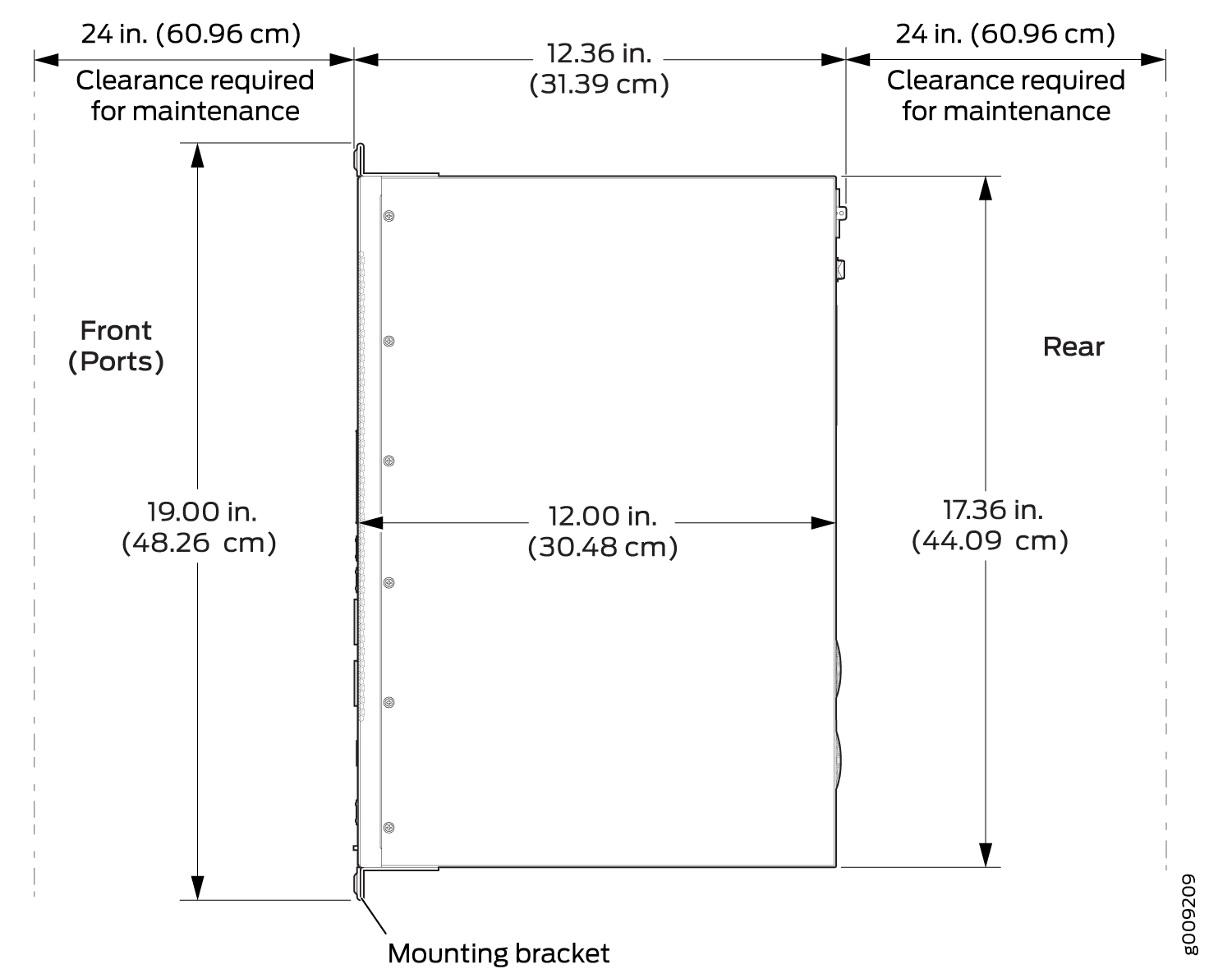LWC Site Guidelines and Requirements
General Site Guidelines
Efficient device operation requires proper site planning. For the device to operate properly, you must ensure maintenance and proper layout of the equipment, rack or cabinet, and wiring closet.
To plan and create an acceptable operating environment for your device and prevent environmentally caused equipment failures:
Keep the area around the chassis free from dust and conductive material, such as metal flakes.
Follow the prescribed airflow guidelines to ensure that the cooling system functions properly. Ensure that the exhaust from other equipment does not blow into the intake vents of the device.
Follow the prescribed electrostatic discharge (ESD) prevention procedures to prevent damaging the equipment. Static discharge can cause components to fail completely or intermittently over time.
Install the device in a secure area, so that only authorized personnel can access the device.
Site Electrical Wiring Guidelines
Table 1 describes the factors you must consider while planning the electrical wiring at your site.
You must provide a properly grounded and shielded environment and use electrical surge-suppression devices.
Avertissement Vous devez établir un environnement protégé et convenablement mis à la terre et utiliser des dispositifs de parasurtension.
|
Site Wiring Factor |
Guidelines |
|---|---|
|
Signaling limitations |
If your site experiences any of the following problems, consult experts in electrical surge suppression and shielding:
|
|
Radio frequency interference |
To reduce or eliminate RFI from your site wiring, do the following:
|
|
Electromagnetic compatibility |
If your site is susceptible to problems with electromagnetic compatibility (EMC), particularly from lightning or radio transmitters, seek expert advice. Strong sources of electromagnetic interference (EMI) can cause:
|
Physical Specifications of an LWC Device
The LWC device chassis is a rigid sheet-metal structure that houses the hardware components. Table 2 summarizes the physical specifications of the LWC chassis.
Product SKU |
Height |
Width |
Depth |
Weight |
|---|---|---|---|---|
LWC |
1.72 in. (4.3 cm) |
17.36 in. (44.1 cm) |
12 in. (30.5 cm) |
9.48 lb (4.3 kg) |
Clearance Requirements for Airflow and Hardware Maintenance for an LWC Device
When planning the site for installing an LWC device, you must allow sufficient clearance around the installed chassis (see Figure 1).

-
For the cooling system to function properly, the airflow around the chassis must be unrestricted. See LWC Cooling Systemfor more information about the airflow through the chassis.
-
If you are mounting an LWC device in a rack or cabinet with other equipment, ensure that the exhaust from other equipment does not blow into the intake vents of the chassis.
-
Leave at least 24 in. (61 cm) both in front of and behind the LWC device. For service personnel to remove and to install hardware components, you must leave adequate space at the front and back of the LWC. NEBS GR-63 recommends that you allow at least 30 in. (76.2 cm) in front of the rack or cabinet and 24 in. (61 cm) behind the rack or cabinet.
Rack Requirements for an LWC Device
You can mount the LWC device on two-post racks or four-post racks.
Rack requirements consist of:
-
Rack type
-
Mounting bracket hole spacing
-
Rack size and strength
-
Rack connection to the building structure
Table 3 provides the rack requirements and specifications for the device.
|
Rack Requirement |
Guidelines |
|---|---|
|
Rack type |
Use a two-post rack or a four-post rack. You can mount the device on any two-post or four-post rack that:
A U is the standard rack unit defined in Cabinets, Racks, Panels, and Associated Equipment (document number EIA-310–D) published by the Electronics Industry Association (http://www.ecianow.org/standards-practices/standards/). The rack must meet the strength requirements to support the weight of the chassis. |
|
Mounting bracket hole spacing |
The holes in the mounting brackets are spaced at 1 U (1.75 in. or 4.45 cm). Therefore, you can mount the device in any rack that provides holes spaced at that distance. |
|
Rack size and strength |
|
|
Rack connection to building structure |
|
We supply, with each device, one pair of mounting brackets for mounting the device on two posts of a rack . For mounting the device on four posts of a rack or cabinet, you can order a four-post rack-mount kit separately.
Cabinet Requirements for an LWC Device
You can mount the LWC device in an enclosure or cabinet that contains a four-post 19-in. open rack as defined in Cabinets, Racks, Panels, and Associated Equipment (document number EIA-310-D) published by the Electronics Industry Association.
Cabinet requirements consist of:
-
Cabinet size and clearance
-
Cabinet airflow requirements
Table 4 provides the cabinet requirements and specifications for the LWC device.
|
Cabinet Requirement |
Guidelines |
|---|---|
|
Cabinet size and clearance |
The minimum depth of a cabinet for accommodating an LWC device is 36 in. (91.4 cm). Large cabinets improve airflow and reduce the chance of overheating. |
|
Cabinet airflow requirements |
When you mount the device in a cabinet, ensure that ventilation through the cabinet is sufficient to prevent overheating.
|
Requirements for Mounting an LWC Device on a Desktop or Other Level Surface
You can install the LWC device on a desktop or other such level surface by attaching the four rubber feet (provided) to the bottom of the chassis.
When choosing a location, allow at least 6 in. (15.2 cm) of clearance between the front and back of the chassis and adjacent equipment or walls.
Ensure that the desktop or other level surface on which the device is installed is stable and securely supported.
